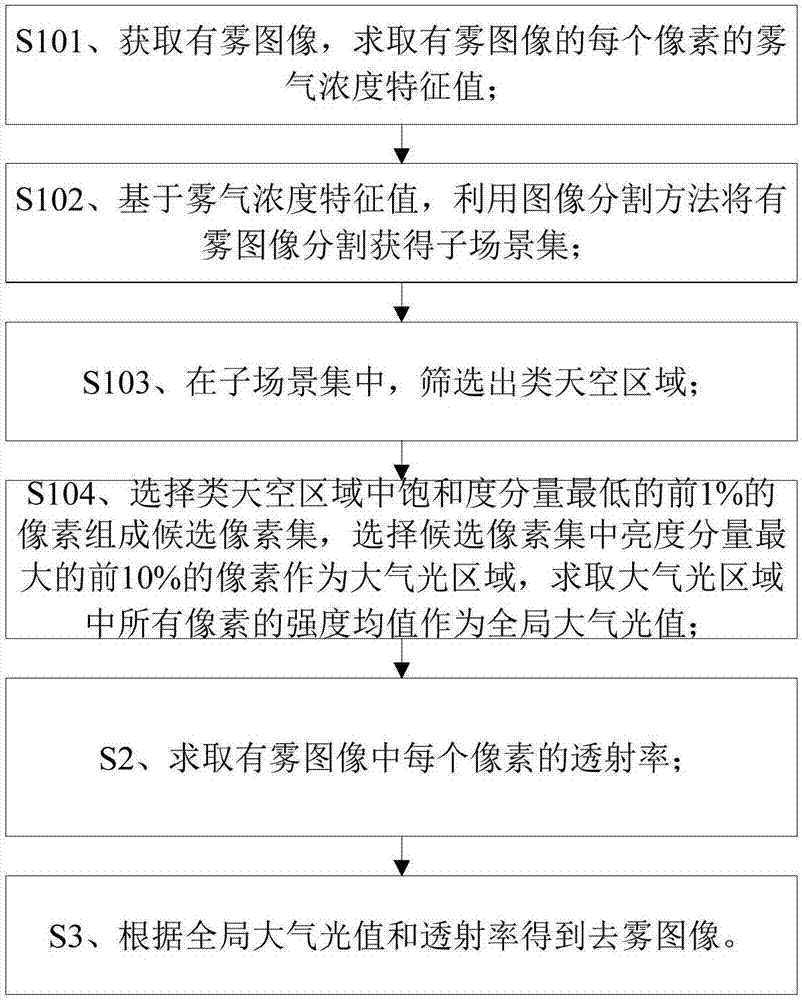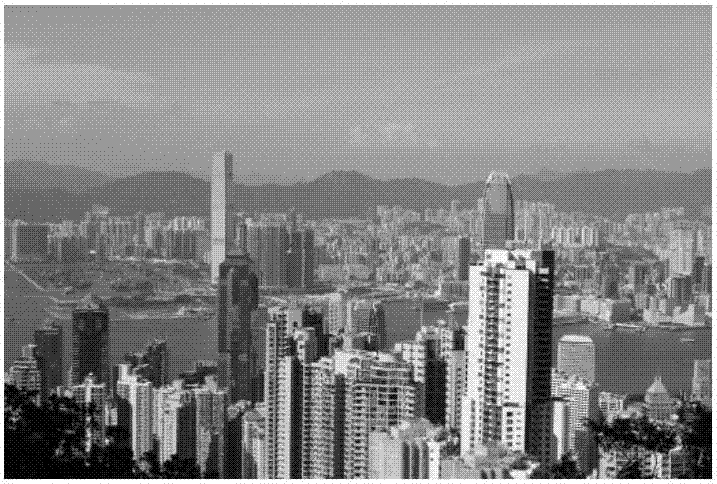Image defogging method based on concentration feature of fog
A fog and concentration technology, applied in image enhancement, image analysis, image data processing, etc., can solve problems such as poor robustness, inapplicability to foggy images, and low positioning accuracy in atmospheric light areas
- Summary
- Abstract
- Description
- Claims
- Application Information
AI Technical Summary
Problems solved by technology
Method used
Image
Examples
Embodiment 1
[0055] Embodiment 1 of the present invention proposes an image defogging method based on fog density features, such as figure 1 shown, including the following steps:
[0056] S1, locate the atmospheric light area in the foggy image, and calculate the global atmospheric light value, including:
[0057] S101. Obtain a foggy image, and calculate the fog concentration feature value of each pixel of the foggy image according to the following formula:
[0058]
[0059] Among them, S(x, y) represents the fog concentration feature value of the pixel (x, y) in the foggy image, I'(x, y) represents the brightness component of the pixel (x, y), Represents the gradient component of the pixel (x, y), I°(x, y) represents the saturation component of the pixel (x, y), γ 1 Indicates the brightness weight, γ 2 Indicates the gradient weight, γ 3 Indicates the saturation weight, γ 4 Indicates the quantization error compensation value.
[0060] During specific processing, set γ 1 = 0.931...
Embodiment 2
[0079] figure 2 It is a flow chart of Embodiment 2 of the present invention specifically applied in the defogging process of a foggy image. There are effect diagrams of each step in the figure, combined with figure 2 Embodiment 2 of the present invention will be described in detail.
[0080] Embodiment 2 of the present invention proposes an image defogging method based on fog concentration features, including the following steps:
[0081] S1, locate the atmospheric light area in the foggy image, and calculate the global atmospheric light value, including:
[0082] S101. Obtain a foggy image, such as figure 2 (a), calculate the fog concentration feature value of each pixel of the foggy image according to the following formula:
[0083]
[0084] Among them, S(x, y) represents the fog concentration feature value of the pixel (x, y) in the foggy image, I'(x, y) represents the brightness component of the pixel (x, y), Represents the gradient component of the intensity of...
PUM
 Login to View More
Login to View More Abstract
Description
Claims
Application Information
 Login to View More
Login to View More - R&D
- Intellectual Property
- Life Sciences
- Materials
- Tech Scout
- Unparalleled Data Quality
- Higher Quality Content
- 60% Fewer Hallucinations
Browse by: Latest US Patents, China's latest patents, Technical Efficacy Thesaurus, Application Domain, Technology Topic, Popular Technical Reports.
© 2025 PatSnap. All rights reserved.Legal|Privacy policy|Modern Slavery Act Transparency Statement|Sitemap|About US| Contact US: help@patsnap.com



